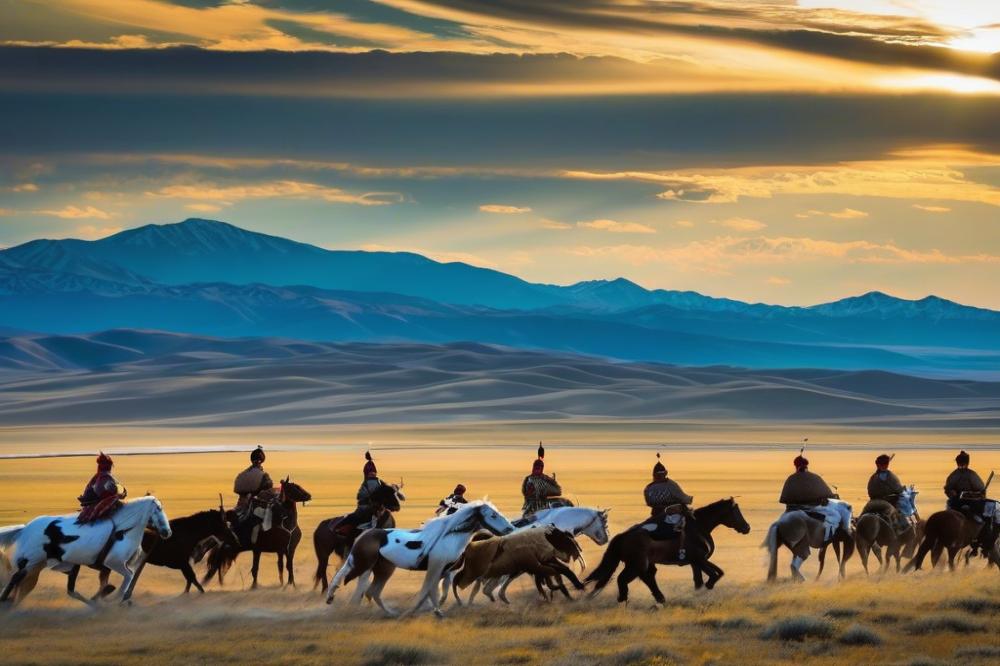Introduction
horses hold a vital place in many cultures around the world. Their significance goes beyond mere transportation. They represent strength, companionship, and a deep connection with nature. In regions like Central Asia, horses are not just animals; they are a way of life.
One fascinating aspect of this relationship occurs among the Kazakh Eagle Hunters. This unique group blends tradition with the majestic world of falconry. Their customs are rich and steeped in history, showcasing a harmonious connection with the environment. Through generations, these skilled individuals have honed their craft, relying on both bird and beast for survival and storytelling.
Integration of horses in the practices of eagle hunting speaks volumes about this cultural bond. Horses serve not only as companions but also as invaluable partners in the hunt. When soaring eagles are dispatched from their perches, horses play a crucial role. Together, they navigate the rugged terrain of the vast steppes, demonstrating an extraordinary synergy between human, horse, and bird.
The Role of Horses in Kazakh Culture
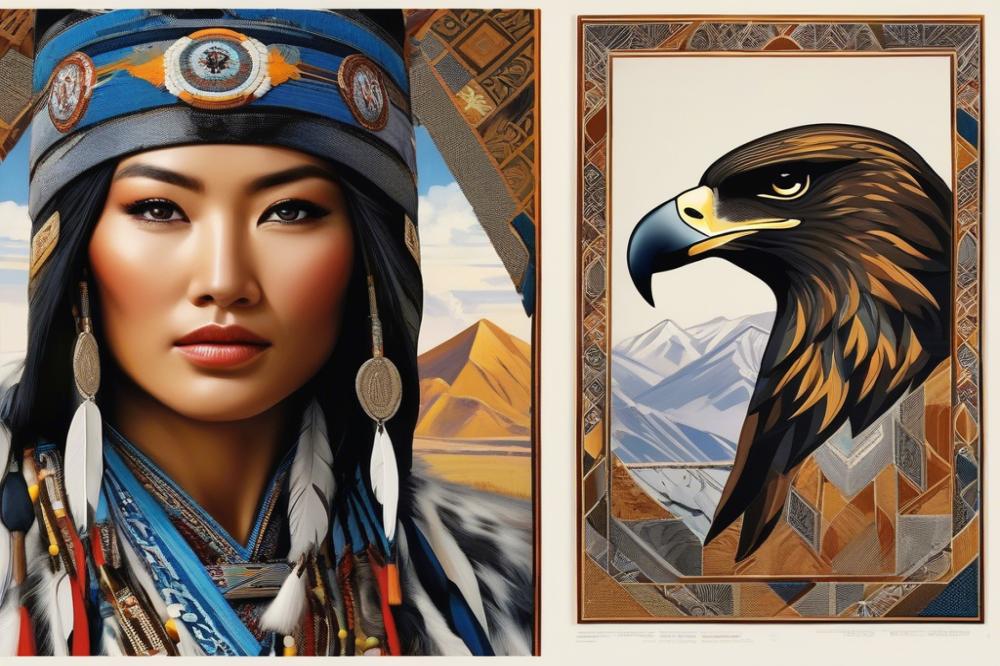
Horses hold a pivotal place in the history of Kazakhstan. For centuries, they served as a primary mode of transportation. The harsh landscape of the steppes made horses essential for survival. Their speed and endurance were crucial for trade and travel. This relationship between humans and horses developed over generations.
A horse often signifies wealth and social status among the Kazakh people. Owning many horses can elevate a family’s standing in the community. Wealthy individuals display their horses with pride. The quality of a horse reflects the owner’s prestige. In traditional gatherings, horses are central to celebrations and rituals. They play a key role in showcasing one’s fortune.
In Kazakh nomadic life, horses are vital companions. They contribute to the mobility typical of a nomadic existence. Herders rely on horses for moving their families and livestock, adapting to seasonal changes. Daily tasks, such as herding sheep or hunting, often require a reliable horse. The bond formed between a Kazakh and their horse is deep and enduring.
Riding is not just a practical activity; it is also cultural. Horsemanship is a skill passed down through families. Young people learn to ride at an early age. Participating in races and games strengthens community ties and fosters tradition. Thus, horses are woven into the very fabric of Kazakh identity.
Kazakh Eagle Hunters: A Unique cultural heritage
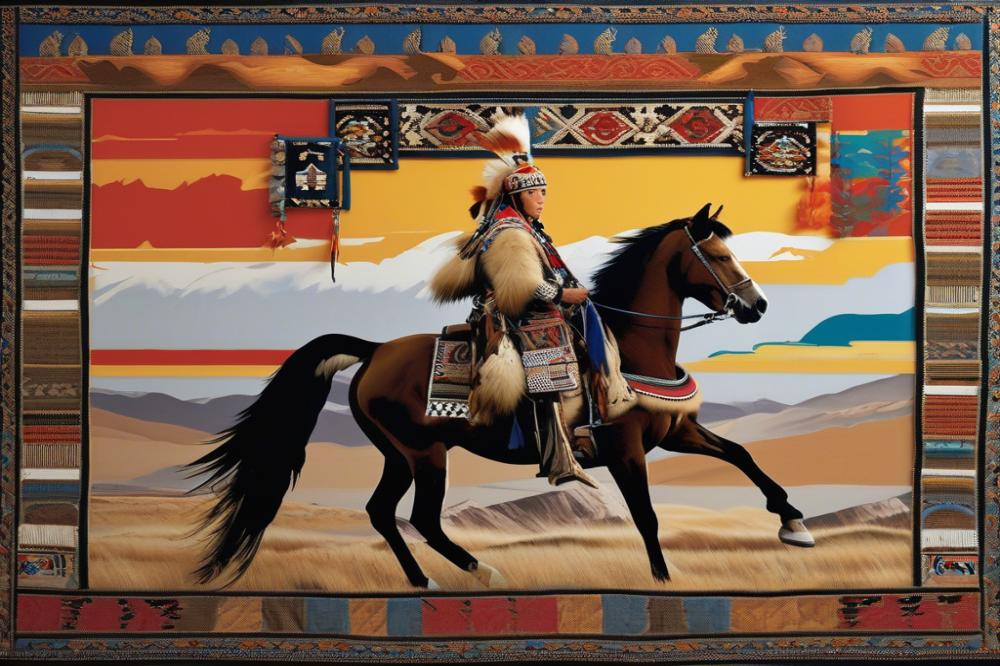
Introduction to the Practice of Eagle Hunting
Eagle hunting is an ancient tradition among the Kazakh people. This practice involves capturing, training, and hunting with golden eagles. The hunters, typically men from nomadic backgrounds, feel a deep connection to their birds. During the fall months, they release the eagle into the wild. It hunts game like foxes and hares, showcasing both strength and skill. Generations have passed down this tradition, making it a vital part of their culture. Every hunt is not just about survival; it is an art form passed through time.
The Relationship Between Kazakh Eagle Hunters and Their Horses
Horses play a crucial role in this hunting tradition. They are more than just transportation; they symbolize status and culture. Good horses are bred and trained with care, reflecting the skills of the rider. When an eagle hunter rides, the horse’s speed and agility complement the eagle’s sharp instincts. Together, they work as a seamless team. The bond between the hunter and horse is built over years of shared experiences. This relationship fosters respect and understanding for both animals.
Techniques and Methods Used by Hunters with Horses
Eagle hunters utilize several techniques to improve their success during hunts. First, the hunter must locate the game, requiring keen observation from both horse and rider. They ride swiftly across vast, open landscapes, scanning for movement. With the eagle perched on their arm, the hunter is always alert. When sighting prey, the eagle is released to chase it down. Coordination is vital; the horse must stay steady while the eagle launches. Additionally, hunters use specific calls to communicate with their birds. This symbiotic relationship highlights the harmony between horse and eagle, showcasing skills that have been refined over centuries. Each hunt is a blend of tradition, skill, and the majesty of nature that defines this unique cultural heritage.
Falconry and the Equestrian Connection
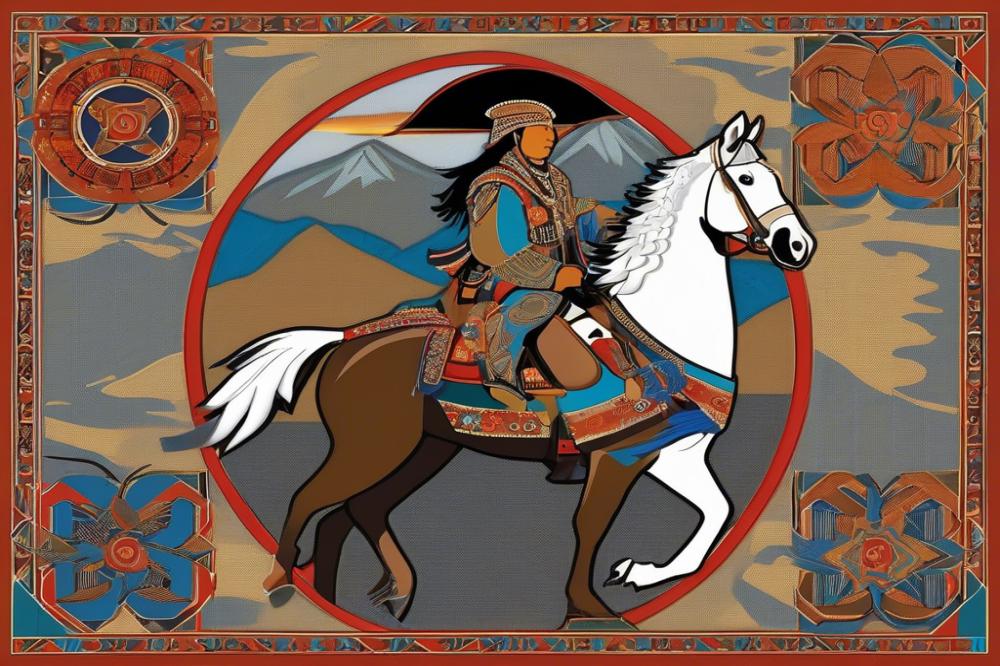
The art of falconry has a long history intertwined with the traditions of horsemanship. In many cultures, the bond between birds of prey and skilled riders represents mastery over nature. This relationship is especially profound among those who practice hunting with eagles. Riders and their majestic steeds work together, each playing a vital role.
Horses serve as more than just transportation during hunts. They provide speed and agility, helping hunters navigate vast landscapes. Maintaining a steady pace allows eagle hunters to find optimal spots for hunting. The horse’s instincts combine with the eagle’s sharp vision, creating a powerful hunting duo. Trust between horse and rider builds over time, enhancing their effectiveness in the field.
Training horses for this specialized purpose is an art in itself. Riders often teach their mounts to remain calm even when an eagle takes flight. The horses learn to react to the handler’s cues. This cooperation is key for successful hunts. An eagle soaring above relies on the horse to help chase down their quarry. The timing must be just right for both animals to work together seamlessly.
Communication between rider and eagle is essential. Both animals watch their surroundings closely, each with unique skills. The eagle focuses on spotting prey high above, while the horse scans the ground below. Such teamwork showcases the deep-rooted connection between these two species. As hunters develop their skills, they discover new ways to enhance this alliance.
In essence, the practice of falconry enriches equestrian traditions. In the windswept steppes, the bond between horse and eagle hunters is a testament to their shared purpose. These elements make the hunt not just a pursuit of food. It is a profound expression of harmony between humans and animals in the wild.
Traditional Practices and Modern Adaptations
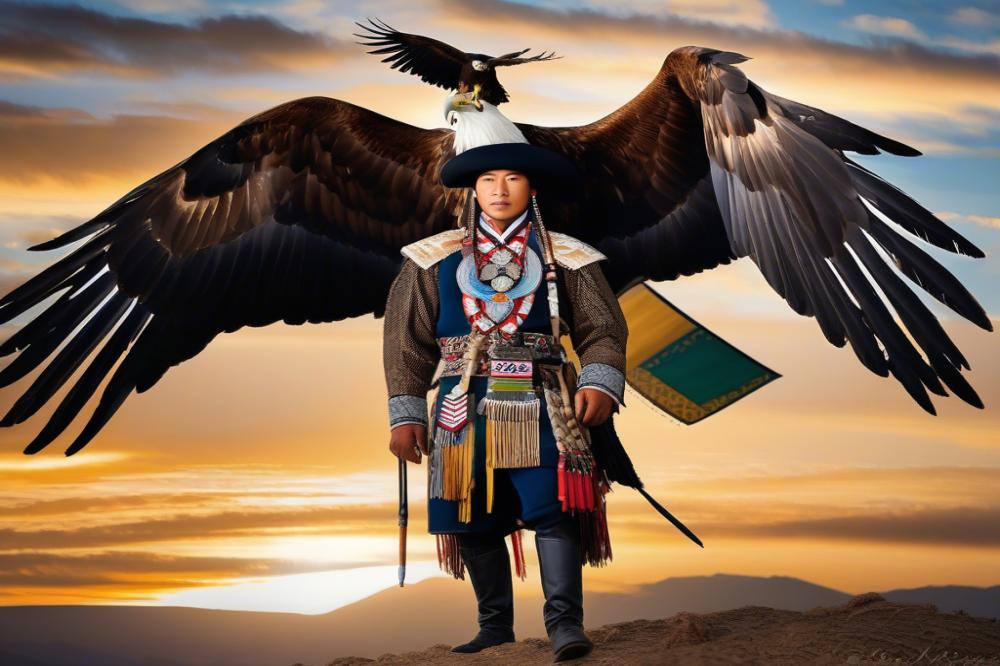
In contemporary Kazakhstan, traditional hunting practices still thrive. Many families continue to pass down the skill of eagle hunting, a practice rooted deeply in their culture. Communities gather to celebrate this heritage during festivals, where demonstrations showcase age-old techniques. Hunters display their connection to nature, partnering with eagles to hunt for small game. This relationship highlights a profound respect for animals and the environment.
However, the influence of modernization touches every aspect of life, including horse riding and hunting. Young people often use technology to learn traditional skills, blending old with new. Social media platforms have made it easier to share videos and stories about these practices. New tools and gear, inspired by modern design, help improve efficiency while maintaining respect for tradition. This combination of tradition and innovation makes hunting more accessible to a younger audience.
Despite changes, there remains a strong desire to preserve cultural heritage. Elders teach younger generations the importance of their customs. Horse riding also plays a crucial role in Kazakh culture. It symbolizes freedom and strength. Families often gather for races and games that engage both youth and elders. The vibrancy of these activities serves as a reminder of a shared identity.
In summation, the continuation of these practices forms a bridge between the past and the present. While the world evolves, Kazakh eagles soar as symbols of tradition. The bond between horses and hunters exemplifies resilience, ensuring that their culture endures through generations.
Wildlife Conservation and Horse Riding
Eagle hunting plays a vital role in wildlife conservation in Kazakhstan. This ancient tradition helps maintain a balance between natural species. Hunters use trained eagles to hunt prey, like foxes and rabbits. In doing so, they prevent overpopulation of these animals, which can disrupt local ecosystems.
Through these traditional practices, the people of Kazakhstan actively preserve their natural surroundings. By practicing responsible hunting, they demonstrate a deep respect for nature. The bond between the hunter and the eagle fosters an awareness of the environment. This relationship helps the community understand the importance of biodiversity.
Equestrian skills are crucial in conservation efforts as well. Riders navigate through difficult terrains, reaching areas that might be hard to access otherwise. Horses allow hunters to move swiftly and efficiently in the wild. This ability to travel enhances their observation of wildlife and habitats.
Moreover, horse riding helps in monitoring animal populations. Being close to nature while riding creates opportunities for education and advocacy. Equestrians can share stories about their experiences with others, promoting conservation message. Their firsthand knowledge can inspire future generations to value their ecosystem.
Participants in this culture pass down their equestrian abilities through generations. Each skill mastered contributes to the overall health of the environment. Together, hunting with eagles and riding horses becomes a partnership that nurtures both wildlife and culture. This connection ultimately serves to protect the unique landscapes of Kazakhstan.
Reflecting on the Connection Between Culture and Tradition
The relationship between horses and the Kazakh eagle hunters is deeply rooted in their way of life. Both the majestic birds and the noble steeds play vital roles in everyday activities, from hunting to rituals. This bond is not only practical but also emotional, showcasing a lifestyle intertwined with nature and tradition. Each gallop across the rugged terrain echoes the rich history and cultural heritage of the Kazakh people.
Maintaining these traditions proves essential for future generations. As the world evolves, preserving this unique practice helps keep the stories and skills of the past alive. Young people learning to ride horses and train eagles carry forward much more than techniques; they inherit a deep sense of identity. This connection fosters respect for nature and an appreciation for history.
In particular, falconry is an art that requires patience and understanding. It teaches valuable lessons about partnership and trust between humans and animals. As societies change, the importance of these cultural expressions should not diminish. They represent a way of life that speaks to loyalty and mastery, lessons that everyone can benefit from.
Final thoughts emphasize the broader significance of horses across various cultures. Within the Kazakh context, these animals are not merely means of transportation; they are symbols of freedom, strength, and connection to the earth. Protecting this bond is essential. As we look to the future, let us honor and support these traditions, ensuring they flourish for years to come.

